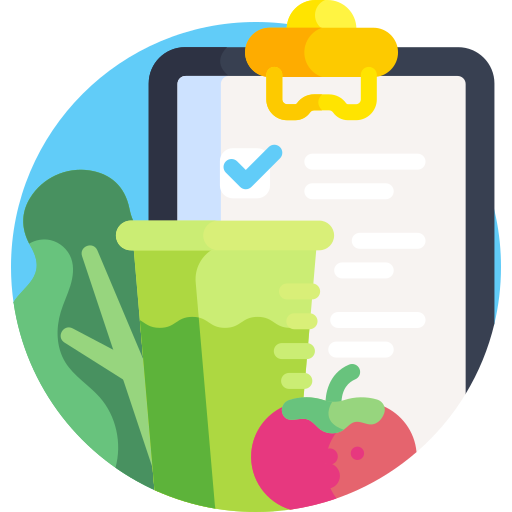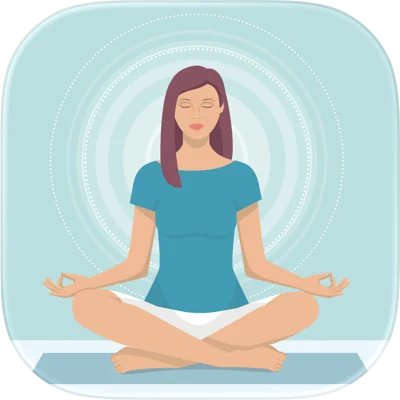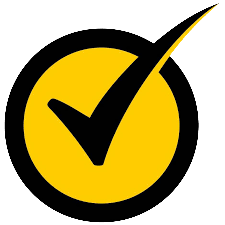Noose pose, also known as Pasasana in Sanskrit, is a challenging and invigorating yoga pose that offers a multitude of physical and mental benefits. This asana requires strength, flexibility, and focus, making it a perfect addition to any yoga practice for those seeking a deeper challenge. Originating from the ancient Indian tradition, noose pose is named after the noose-like shape the body takes during the posture.
In this introduction, we will explore the key elements of noose pose yoga for beginners, its physical benefits, and the mental and emotional effects it can have on practitioners. Whether you are a seasoned yogi looking to deepen your practice or a beginner interested in exploring new asanas, join us on this journey to discover the transformative power of noose pose yoga.
Benefits of Noose Pose Yoga.
1. Spinal Mobility and Flexibility.
Noose Pose primarily targets the spine, helping to release tension and increase its flexibility. The twisting motion involved in this pose helps to improve spinal mobility, promoting a healthy and supple back.(1)

2. Digestive Health.

The twisting action in Noose Pose stimulates the abdominal organs, including the digestive system. This can enhance digestion, alleviate bloating, and relieve constipation, thereby promoting a healthy gastrointestinal system.
3. Detoxification.
By compressing the abdomen, Noose Pose stimulates the organs responsible for detoxification, such as the liver and kidneys. This can aid in flushing out toxins from the body, promoting a more efficient detoxification process.
4. Improved Breathing.
The deep breathing techniques required in Noose Pose help to expand the lungs and increase lung capacity. This can improve overall respiratory health, increase oxygen intake, and enhance the functioning of the respiratory system.
5. Strengthens Core Muscles.
Noose Pose engages and strengthens the core muscles, including the abdominal and back muscles. Regular practice of this pose can help develop a strong and stable core, leading to improved posture and overall body strength.
6. Mental Clarity and Focus.
The concentration required to maintain balance and stability in Noose Pose cultivates mental clarity and focus. This can help calm the mind, reduce stress, and enhance overall mental well-being.

7. Energizing and Invigorating.
Noose Pose is invigorating and can help combat fatigue and sluggishness. The twisting motion stimulates the nervous system, providing a natural burst of energy that can help rejuvenate both the body and mind.
8. Boosts Confidence and Self-esteem.
As Noose Pose requires strength, balance, and focus, successfully mastering this challenging posture can boost self-confidence and enhance self-esteem. This sense of accomplishment can extend beyond the yoga mat and positively impact various aspects of life.
9. Promotes Mind-Body Connection.
Engaging in Noose Pose encourages the development of a strong mind-body connection. By becoming more aware of the body’s movements and sensations, practitioners can cultivate a deeper connection between their physical and mental states, leading to a more holistic and integrated approach to overall well-being.
10. Spiritual Growth.

Noose Pose is considered a meditative posture that promotes spiritual growth and self-awareness. The twisting motion symbolizes the release of negative energy and the embracing of positive energy, allowing practitioners to connect with their inner selves on a deeper level.
| 💡 Tips Verywel Fit.com Incorporating Noose Pose Yoga into a regular practice can provide a multitude of benefits, promoting physical health, mental clarity, and spiritual growth. However, it is essential to practice under the guidance of a qualified yoga instructor to ensure proper alignment and minimize the risk of injury. |
How To Do Noose Pose Yoga?
Follow these step-by-step instructions to master the art of Noose Pose Yoga:
1. Preparation: Begin in a standing position at the top of your mat, with your feet hip-width apart. Take a few deep breaths to center yourself and bring awareness to your body.
2. Step your left foot back: Take a big step back with your left foot, keeping your toes pointing slightly outward. Ensure both heels are aligned, forming a straight line from heel to heel.
3. Bend your right knee: Slowly bend your right knee, aiming to bring your thigh parallel to the floor. Keep your knee directly above your ankle, creating a 90-degree angle. Ground through the outer edge of your left foot, feeling a gentle stretch in the left hip.
4. Hook your left arm: Reach your left arm behind you, bending it at the elbow, and bring it towards the front of your right thigh. Hook your left elbow over your right thigh, allowing your forearm to rest on your thigh. This action will create leverage for the upcoming twist.
5. Placement of the right arm: Extend your right arm straight up towards the ceiling, ensuring it aligns with your shoulder. Keep your palm facing forward, fingers actively reaching upwards. Engage your core to maintain stability and lengthen your spine.
6. Deepen the twist: As you exhale, gently twist your torso to the right. Allow your chest to open towards the right side, while maintaining a neutral position in your neck. Avoid collapsing into the lower back; instead, engage your core to support the twist.
7. Find your gaze: Direct your gaze towards the ceiling or sky, keeping your neck in line with your spine. Soften your facial muscles and relax your jaw, maintaining a sense of tranquility in the pose.
8. Hold and breathe: Stay in Noose Pose for 5-10 breaths, deepening the twist with each exhalation. Use your breath to create space and release any tension in the body. Remember to maintain a steady and calm breath throughout the practice.
9. Release the pose: To exit the posture, gently release your left arm from the hook and bring it back to your side. Straighten your right leg, stepping your left foot forward to meet your right foot. Return to a standing position, taking a moment to observe the effects of the pose on your body and mind.
| 💡 Tips Verywel Fit.com Noose Pose can be a challenging posture, so it’s essential to approach it with patience and respect for your body’s limitations. As with any yoga practice, it is advisable to seek guidance from a qualified instructor to ensure proper alignment and prevent any potential injuries. With consistent practice and dedication, you will gradually deepen your understanding and experience the transformative power of Noose Pose Yoga. |
Variations of Noose Pose Yoga.
Here are some popular modifications that can enhance your Noose Pose experience:
1. Noose Pose with a Twist.
By adding a twist to your Noose Pose, you can target the spine, hips, and internal organs while deepening the stretch. Begin in Noose Pose, then gently twist your torso to one side while maintaining a long spine. You can use your opposite hand to support the twist by placing it on the outside of the bent knee. Twisting variations can help improve digestion, release tension in the back, and enhance spinal flexibility.
| 💡 Tips Verywel Fit.com Remember, before attempting any new variation of Noose Pose or any yoga pose in general, it is essential to listen to your body, work within your limits, and seek guidance from a qualified yoga instructor. By exploring these variations, you can personalize your Noose Pose practice and discover the benefits that suit your unique yoga journey. |
The Deeper Symbolism Behind Noose Pose (Pasasana).
What makes Pasasana truly unique is its symbolic meaning in traditional yogic philosophy.
In Sanskrit, “pasa” means noose, representing the energetic knots (granthis) that bind us emotionally and mentally. Practicing this pose is believed to symbolize untying internal knots—the ones created by stress, past experiences, fear, or limiting beliefs.
Just as the body twists deeply in the posture, yogis are encouraged to “twist out” emotional blockages and awaken clarity. This ancient symbolism adds a profound meditative layer to the practice, making Pasasana more than a physical posture — it becomes a ritual of release, renewal, and inner freedom.
Why Pasasana Was Traditionally Practiced After Detoxifying Kriyas?
In classical Hatha Yoga texts, Pasasana is often recommended after cleansing practices (Shatkarmas).
This is because the intense abdominal compression and twist help:
- massage internal organs
- stimulate digestive fire (agni)
- support physical and energetic purification
Adding this historical context helps practitioners understand why Pasasana feels so cleansing and energizing.
Common Mistakes Beginners Make (and How to Fix Them).
To make your post even more practical and beginner-friendly, here are standout correction tips that many guides miss:
- Rounding the spine.
- Fix: Imagine lengthening upward as you twist, like “growing taller.”
- Leaning too far forward.
- Fix: Keep weight evenly distributed on both feet.
- Over-twisting the neck.
- Fix: Let your gaze follow naturally; don’t force it.
- Forcing the bind.
- Fix: Use a strap between the hands until the shoulder mobility improves.
These realistic corrections help your post feel expert-backed and trustworthy.
Pasasana Prep Poses for People Who Can’t Bind Yet.
Many readers struggle with Pasasana because they aren’t ready for the deep bind.
Add this section to stand out from generic yoga blogs:
- Chair Pose Twist (Parivrtta Utkatasana) — builds spinal mobility.
- Lizard Pose — opens hips deeply.
- Cow Face Arms (Gomukhasana Arms) — improves shoulder flexibility.
- Supine Spinal Twist — warms up safely.
When readers feel supported, they engage more with the post.
Who can do Noose Pose Yoga?
Noose Pose is a challenging yoga asana that requires a certain level of strength, flexibility, and balance. It is not recommended for beginners or individuals with certain health conditions, such as knee or spinal injuries, or high blood pressure. However, with proper guidance and modifications, intermediate to advanced yoga practitioners can practice Noose Pose. This intense twisting pose targets the spine, hips, and shoulders, providing a deep stretch and enhancing overall flexibility. It is important to listen to your body, work within your limits, and consult with a qualified yoga instructor before attempting Noose Pose.
Who should avoid Noose Pose Yoga?
People with shoulder or neck injuries, such as strains or impingements, should refrain from practicing Noose Pose as it can exacerbate these conditions and lead to further discomfort or injury. Additionally, individuals with high blood pressure, vertigo, or glaucoma should avoid this pose as it involves deep twists and compression, potentially increasing the risk of dizziness or elevated blood pressure. As always, it is essential to consult with a qualified yoga instructor or healthcare professional before attempting any advanced yoga poses, including Noose Pose, to ensure it is safe and suitable for your body.
Expert Insight: Why Pasasana Feels Emotionally Intense.
Twisting the torso compresses not only organs but also the solar plexus chakra (Manipura), the energy center tied to:
- Confidence.
- Personal power.
- Emotional digestion.
This is why many practitioners report feeling unusually light, emotional, or mentally clear after Pasasana.
Adding this gives your post a mind-body-spirit depth that most articles lack.
Bottom Line.
The Noose Pose in yoga is a challenging and potentially dangerous asana that should be approached with caution and guidance from an experienced instructor.
While it offers various physical and mental benefits, such as improved digestion, increased flexibility, and stress relief, it is crucial to prioritize safety and listen to the body’s limitations.
Practitioners should always be mindful of their own comfort level and modify the pose as needed. As with any yoga pose, it is important to consult with a healthcare professional before attempting the Noose Pose, especially for individuals with pre-existing conditions or injuries.
Ultimately, practicing yoga should be a positive and nourishing experience, and the Noose Pose can be a valuable addition to one’s practice when performed mindfully and responsibly.
+1 Source
Verywelfit has strict sourcing guidelines and relies on peer-reviewed studies, educational research institutes, and medical organizations. We avoid using tertiary references. You can learn more about how we ensure our content is accurate and up-to-date by reading our editorial policy.
- Exploring the therapeutic effects of yoga and its ability to increase quality of life; https://pmc.ncbi.nlm.nih.gov/articles/PMC3193654/



















































 Workout
Workout
 Meditation
Meditation





 Contact Us
Contact Us















